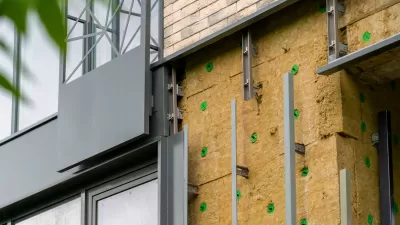Construction has begun on the world’s first residential high-rise to meet Passive House standards: a dorm tower on Cornell Tech’s much-anticipated Roosevelt Island campus in New York City.
Passive House—an energy efficiency standard with German roots—is tougher and more exact than LEED certifications. Very few other high-rise Passive House buildings exist, with one notable office in Vienna, where smaller Passive Houses abound.
Hudson Companies’ David Kramer, developer of the tower in New York City, told The Planning Report about visiting Vienna and undergoing the process to create this extremely sustainable building as part of Cornell Tech—a public-private partnership that survived a mayoral transition.
Where the city saw an opportunity for economic development on Roosevelt Island, Kramer saw a way to raise the standard for sustainable building in the US. He says Passive House design principles can reduce energy consumption by up to 70 percent—without sacrificing comfort or convenience.
He explains:
“In Vienna, I walked through a [Passive House] dorm and asked students what they thought of the building. They’d say, “The building is great!” I’d ask, “Why is that?” Typically, they’d say something like, “Because there are plenty of washers and dryers in the laundry room.” The success of a Passive House is that people don’t even realize they’re in one.”
FULL STORY: Hudson’s Kramer Builds Game-Changing NYC Cornell Tech Highrise

Maui's Vacation Rental Debate Turns Ugly
Verbal attacks, misinformation campaigns and fistfights plague a high-stakes debate to convert thousands of vacation rentals into long-term housing.

Planetizen Federal Action Tracker
A weekly monitor of how Trump’s orders and actions are impacting planners and planning in America.

Chicago’s Ghost Rails
Just beneath the surface of the modern city lie the remnants of its expansive early 20th-century streetcar system.

Bend, Oregon Zoning Reforms Prioritize Small-Scale Housing
The city altered its zoning code to allow multi-family housing and eliminated parking mandates citywide.

Amtrak Cutting Jobs, Funding to High-Speed Rail
The agency plans to cut 10 percent of its workforce and has confirmed it will not fund new high-speed rail projects.

LA Denies Basic Services to Unhoused Residents
The city has repeatedly failed to respond to requests for trash pickup at encampment sites, and eliminated a program that provided mobile showers and toilets.
Urban Design for Planners 1: Software Tools
This six-course series explores essential urban design concepts using open source software and equips planners with the tools they need to participate fully in the urban design process.
Planning for Universal Design
Learn the tools for implementing Universal Design in planning regulations.
planning NEXT
Appalachian Highlands Housing Partners
Mpact (founded as Rail~Volution)
City of Camden Redevelopment Agency
City of Astoria
City of Portland
City of Laramie





























